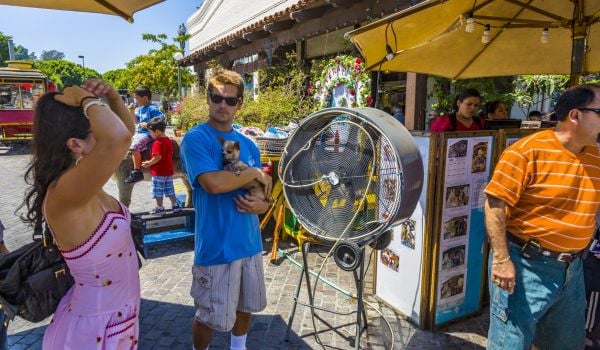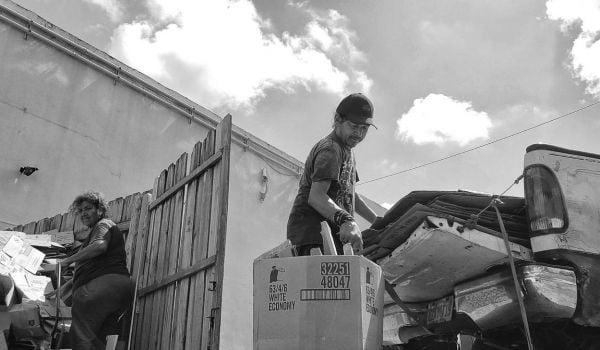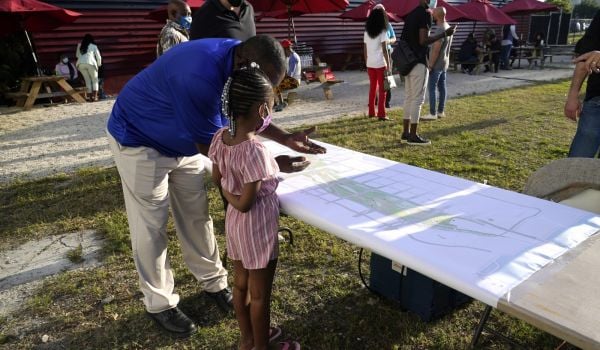Urban designer Paul Murrain said, “We cannot continue to believe that the landscape is sacred and the city profane.” Yet media teaches us at every poorly lit street corner that the city is profane: profanity on brick walls and sidewalks, in theaters and bookstores. Sin City. Star Wars and its city planet Coruscant. CSI Miami or New York or Las Vegas or, who knows what lucky town is next. Yuma, perhaps. “They must both be considered sacred,” he concludes.
Finding the sacred in the city is not an easy exercise, cathedrals and other houses of worship aside. The essential challenge is in believing that things made by man can be sacred, for cities are manmade entities, even with natural settings surrounding or crisscrossing or, like coyotes and raccoons, stealing in for better eats. A follow-up question becomes: Do we find the sacred in individual components — a wrought iron gate, stamped manhole cover, forest green dumpster — or in the larger whole: the neighborhood or city or central city and its suburbs, which we might call metropolis or what the U.S. Census Bureau refers to as Metropolitan Statistical Areas?

Looking out from the Roman Forum in a complete 3-D model of Rome.
Image courtesy the Regents of the University of California, 2007.
The twins Romulus and Remus were stolen from their mother and abandoned along the Tiber River, where a mother wolf found the infants and raised them as her own. When they were old enough, the god of war Mars commanded the twins to construct a city at the site where the she-wolf had found them. Though they built the city, the brothers battled to determine who would lead it. Romulus won, and so the city became Rome, his legacy.
“Men do not love Rome because she is beautiful; Rome is beautiful because men have loved her.” Philosopher and national economist Leopold Kohr.
What role does love play in the sacred? What role beauty? What role compassion and welfare, the hallmarks of a citizenry concerned about its broader self and its future?
“But seek the welfare of the City and pray to the Lord on its behalf, for in its welfare you will find your welfare.” Jeremiah 29:7.

The Yuma Crossing (“Ocean to Ocean Highway Crossing”)
at the Colorado River, circa 1945.
Around 1540, in perhaps Rome’s twentieth century as a city, the Spanish explorers Hernando de Alarcón and Melchior Díaz separately discovered a narrow neck of the Colorado River, then unnamed by the Europeans, above the Sea of Cortés (also unnamed by Europeans, though not for long). Three-hundred years later, Yuma Crossing served as a steamboat crossing, primarily for mines and military outposts. In 1864 Yuma became a county seat, and six years later the Southern Pacific Railroad bridged the Colorado River there. Today, the city of nearly 90,000 residents (175,000 during the winter) boasts well-known military posts-Marine Corps Air Station Yuma and Yuma Proving Ground-as well as Roxaboxen Park (named after the book by Alice McLarren), Imperial Date Gardens, Cocopah Indian Museum, and tours of the river by jet boat and stream cruiser.
Another question: Can we consider the city sacred when it is built, layer pon layer, upon a legacy of genocide? Yuma, one could argue, flows from the confluence of the Mexican and U.S. armies annihilating Apache and other native peoples. Rome, a city and then an empire, cast its tunic of military enlightenment from the British Isles to Africa, east to Asia. The counter-question: Is there any city that wasn’t similarly raised?
We must find the sacred not only in the manmade, but also in what has been remade, and continues to be remade. Not ignoring but rather integrating history. Then, with design inspired by nature, we will find the sacred in the city.










